Hermitage 1914 Cognac – The Ladies Vintage
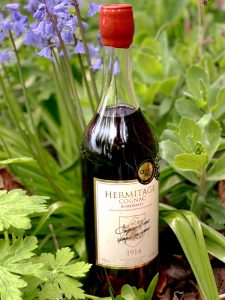 We were fascinated to read an interview with Bénédicte Hardy in ‘Frenchly’. Bénédicte is the fifth generation to be involved with the House of Hardy cognacs, although much of her time has been spent working in the US.
We were fascinated to read an interview with Bénédicte Hardy in ‘Frenchly’. Bénédicte is the fifth generation to be involved with the House of Hardy cognacs, although much of her time has been spent working in the US.
Entitled ‘Cognac’s return to Grace’, she describes the rich history of cognac and how in recent years, cognac has evolved into a symbol of both ‘rap stardom’ and ‘highbrow mixology’. Here at Hermitage, it is that history that we aim to bottle and so a summary follows:
In the 17th century, it was English, Irish, and Dutch négociants who really put cognac on the map as they had realised what an amazing resource the river Charente was for shipping their products worldwide. During the subsequent centuries, cognacs’ fortunes hit highs and lows, but always survived. The French Phylloxera crisis, for example, was eventually solved by turning to American root stock. Even two World Wars did not ruin the industry. During World War I, while men were conscripted, women were left to manage the vineyards and distillation by themselves. The work of these women became so significant that eaux-de-vie produced in 1914 is now known as part of the Ladies Vintage. And during World War II, while Nazi soldiers ransacked Champagne for all it was worth, a Cognac local, of German origin, Lieutenant Gustav Klaebisch, took it upon himself to protect the cognac cellars and vineyards from being pillaged.
Hermitage stocks cognac vintages harvested during both World Wars, but we are particularly proud of our Ladies Vintage, produced in 1914. A Masters Award winner, unsurprisingly, only a few bottles remain.

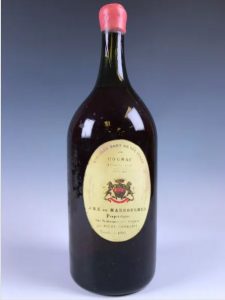 We were delighted to welcome Paddy Shave from Brightwells Auction House to our offices a few weeks ago. He brought with him an imperial half gallon (2.27 litres) bottle of Massougnes 1802 Cognac which had passed through our hands almost thirty years ago. We are fortunate to have acquired a number of these large bottles over the years from the owner of the Massougnes Estate, the Comtesse de la Bourdeliere, Marie-Antoinette Pintaurd des Allees – a direct descendant of Henry II and Eleanor of Acquitaine. This particular bottle from 1802 in the Napoleonic era, was originally sold by us to the Gleneagles Hotel in Scotland, where is was on display for many years. Still unopened, it was fascinating to see it turn up for sale once more and although the estimated price of £100,000+ was not reached, it still sold for an impressive £52,000. We have sold one or two of these oversized bottles of Massougnes over the years (vintages range from 1800 to 1812) and still have
We were delighted to welcome Paddy Shave from Brightwells Auction House to our offices a few weeks ago. He brought with him an imperial half gallon (2.27 litres) bottle of Massougnes 1802 Cognac which had passed through our hands almost thirty years ago. We are fortunate to have acquired a number of these large bottles over the years from the owner of the Massougnes Estate, the Comtesse de la Bourdeliere, Marie-Antoinette Pintaurd des Allees – a direct descendant of Henry II and Eleanor of Acquitaine. This particular bottle from 1802 in the Napoleonic era, was originally sold by us to the Gleneagles Hotel in Scotland, where is was on display for many years. Still unopened, it was fascinating to see it turn up for sale once more and although the estimated price of £100,000+ was not reached, it still sold for an impressive £52,000. We have sold one or two of these oversized bottles of Massougnes over the years (vintages range from 1800 to 1812) and still have 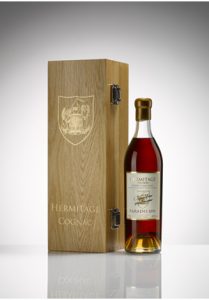
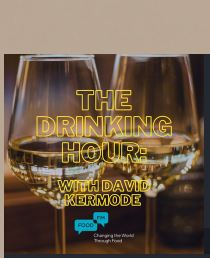 We are always excited by a new arrival, especially when it is one from the nineteenth century! Our
We are always excited by a new arrival, especially when it is one from the nineteenth century! Our 
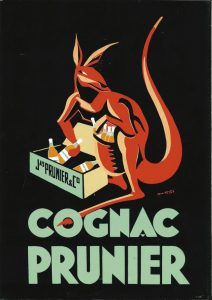 During the years after the gold rush in the 1850s, brandy became the most popular spirit in Australia. French companies were quick to seize the opportunity and in 1870
During the years after the gold rush in the 1850s, brandy became the most popular spirit in Australia. French companies were quick to seize the opportunity and in 1870 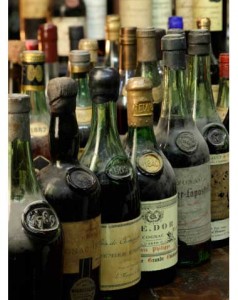 M Restaurant has announced that it is to sell its bottle of 1894 cognac for over £6000 for a 25ml shot – that’s the price of cognac history. The bottle is reputedly the first blend ever produced by Jean Fillioux, who founded the
M Restaurant has announced that it is to sell its bottle of 1894 cognac for over £6000 for a 25ml shot – that’s the price of cognac history. The bottle is reputedly the first blend ever produced by Jean Fillioux, who founded the 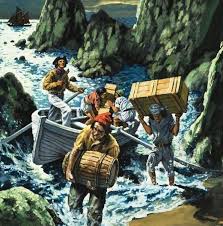 During the 18th Century smuggling in Cornwall was a way of life. It is said that at its peak, more than 500,000 gallons of French brandy was smuggled in per year. This equates to more than two million bottles. Whole families were involved and the number of smugglers far outweighed the number of Excise men stationed along the coast to stop them. There was a strong incentive to continue since the cost of buying brandy legally, with Alcohol Duty paid, was five times greater than the cost of the contraband. It was often the case that even the judiciary, doctors and priests were in on the act as they provided the funds.
During the 18th Century smuggling in Cornwall was a way of life. It is said that at its peak, more than 500,000 gallons of French brandy was smuggled in per year. This equates to more than two million bottles. Whole families were involved and the number of smugglers far outweighed the number of Excise men stationed along the coast to stop them. There was a strong incentive to continue since the cost of buying brandy legally, with Alcohol Duty paid, was five times greater than the cost of the contraband. It was often the case that even the judiciary, doctors and priests were in on the act as they provided the funds.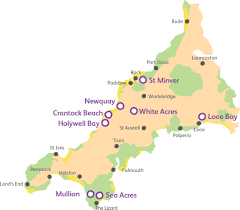 Most of the brandy came from the ports of La Rochelle and Rochefort and illegal shipments arrived regularly at Falmouth coves such as Helford, Gweek, Porthallow and Godrevy. The French were still reducing their wines for easier transportation to England, Ireland and Holland. The quantity of brandy shipped to England did much to support the French brandy industry during the 18th Century. However, by the early 1800s Customs had started to gain a level of control. Some smugglers were apprehended but juries were often reluctant to convict as many had connections with the trade. Even by the mid 19th Century, £millions were still being lost due to the Cornish smugglers evading tax.
Most of the brandy came from the ports of La Rochelle and Rochefort and illegal shipments arrived regularly at Falmouth coves such as Helford, Gweek, Porthallow and Godrevy. The French were still reducing their wines for easier transportation to England, Ireland and Holland. The quantity of brandy shipped to England did much to support the French brandy industry during the 18th Century. However, by the early 1800s Customs had started to gain a level of control. Some smugglers were apprehended but juries were often reluctant to convict as many had connections with the trade. Even by the mid 19th Century, £millions were still being lost due to the Cornish smugglers evading tax.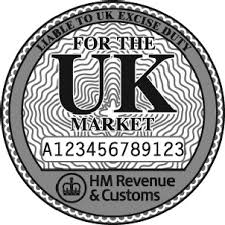 Alcohol Duty is of course an important part of the British tax system and is calculated today at a cost of £28.74 per litre of pure spirit. A 70cl bottle of brandy at 40% alcohol by volume (abv) therefore attracts a duty of £8.05. Shipments of
Alcohol Duty is of course an important part of the British tax system and is calculated today at a cost of £28.74 per litre of pure spirit. A 70cl bottle of brandy at 40% alcohol by volume (abv) therefore attracts a duty of £8.05. Shipments of 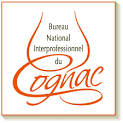 region and created the wine and eaux-de-vie distribution bureau to preserve the cognac stock. When the war ended this organisation emerged as the Bureau National Interprofessionnel du Cognac (BNIC), cognac’s governing body. Composed equally of growers and merchants, the BNIC acquired a great deal of de facto independence from the government in the formulation and supervision of the rules governing
region and created the wine and eaux-de-vie distribution bureau to preserve the cognac stock. When the war ended this organisation emerged as the Bureau National Interprofessionnel du Cognac (BNIC), cognac’s governing body. Composed equally of growers and merchants, the BNIC acquired a great deal of de facto independence from the government in the formulation and supervision of the rules governing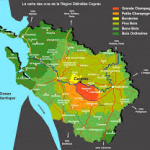 cognac. The BNIC also took over the role, previously performed by Martell and Hennessy, of deciding the price of new brandies from various crus. The cognac region had been divided into crus in the 1930s as a natural consequence of the Appellation d’Origine Contrôlée system which had become law in 1905.
cognac. The BNIC also took over the role, previously performed by Martell and Hennessy, of deciding the price of new brandies from various crus. The cognac region had been divided into crus in the 1930s as a natural consequence of the Appellation d’Origine Contrôlée system which had become law in 1905.